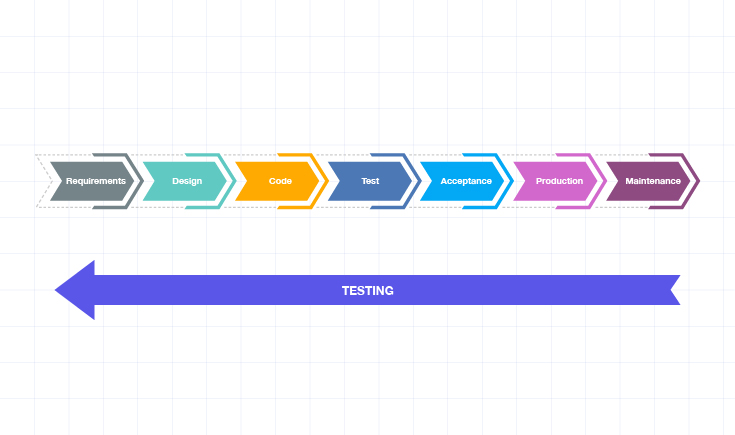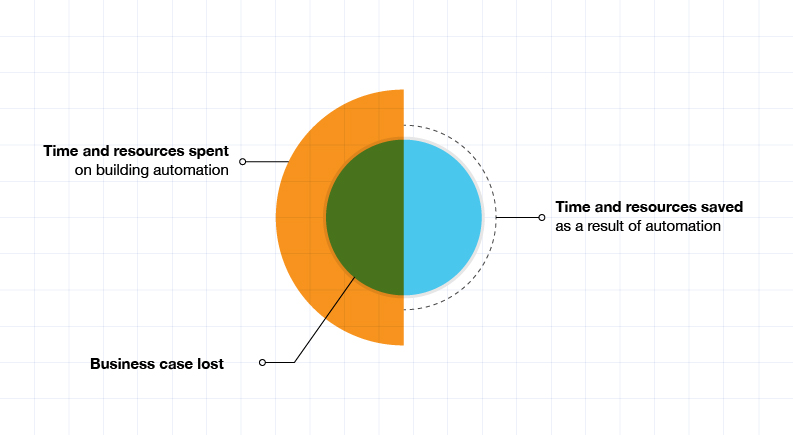The need to save cost and time has pushed organizations to introduce better and faster approaches for developing and testing applications. No longer does the ‘build first, test later’ method work in favor of companies that are attempting to succeed in such a competitive environment. Today, DevOps is the rage as it helps to shrink the time gap between development and deployment with its CI/CD techniques. But even DevOps will not be able to do any good without the right set of principles to run your project. This is where Shift Left testing principles help to transform your development and testing approach.
Shift left testing is an approach that enables companies to test their applications early in the development process. And we are going to discuss the topic in detail in this blog.
Table Of Contents
- 1 What Does Shift Left Mean in DevOps?
- 2 What are Shift Left Testing Principles?
- 3 Why are Shift Left Testing Principles Important in DevOps?
- 4 Why does DevOps Recommend “Shift Left” Testing Principles?
- 5 Advantages of Shift Left Testing Principles
- 6 Shift-left and Test Automation in DevOps
- 7 Takeaway
- 8 Frequently Asked Questions (FAQs)
- 9 Suggested Readings
What Does Shift Left Mean in Devops?
Shift left in DevOps refers to the organizations’ endeavor to ensure that the applications undergo testing in the early stages of development. It is a part of DevSecOps organizational design that combines development, security, and operations.DevOps consist of Continuous testing/integration and Continuous deployment: two features that make sure that the software undergoes frequent testing anywhere and whenever.
Continuous testing/integration (CI) pertains to testing earlier, consistently, faster, and automatically during the entire development stage. The application goes from development to testing and to deployment with no gaps in a continuous DevOps process. It consists of Unit testing, Integration testing, system testing, and API testing and assists developers in locating issues to address them and improve product quality.
Continuous deployment refers to automatically pushing the code changes to the production environment. It follows a series of tests before updating the changes directly to the production. To achieve such fast testing and delivery, automated regression testing is recommended. CI/CD approaches can be automated and performed well with test automation tools. For instance, Testsigma automates regression tests for web, mobile, desktop and APIs, thus testing large parts of your test suites. Our tool supports shift-left testing in many other ways, and you can read about it here.
What Are Shift Left Testing Principles?

The traditional SDLC model relies on a forward-moving process where testing occurs at the later stages. If testers identify any issues in the application, they send it back to the developers for rectification. But this complete process consumes a considerable amount of time, is highly complex, and comes with a huge cost.
The shift left testing principle consists of moving the testing phase from the end of SDLC to the early stages of the pipeline. As opposed to executing the test cases after the development phase is over to send the product back to coders upon encountering bugs, shift left identifies and resolves issues early in the development process. This approach reduces the time in fixing bugs that are discovered later in the pipeline and improves software quality.
Typically, the success of shift left means developers run more tests to check application quality before pushing it to the testers. And multiple automation tools support the shift left testing principles. For instance, a tool that lets you begin with your testing along side the development activities. This tool could support TDD or unit testing, or could help testers create tests without waiting for development to finish.
Why Are Shift Left Testing Principles Important in Devops?
There are many reasons why you must adopt shift left testing principles in DevOps. Here are some of them:
- Pushes testing to the early stages of the pipeline and saves cost
- Makes it easier for developers to detect and resolve bugs early in software development
- Produces a high-quality application with fewer code patches and fixes
- Reduces the instances of delay in product delivery
- Improves customer satisfaction as the delivery is on time and with minimal issues
- Allows for the use of test automation tools early in SDLC that increases the accuracy of finding errors
- Enables your team to write, execute, and record test cases and their results, respectively, using automation tools.
Why Does Devops Recommend “shift Left” Testing Principles?
The primary goal of DevOps is to ensure that the development and testing process is smooth, which provides better quality products at an increased speed. And two of the major reasons why DevOps recommends shift left testing principles are reduced cost of fixing bugs and increased speed of delivering high-quality software.
Reduced Cost of Fixing Defects
It is common knowledge in every business that resolving issues during the development phase is easier and costs less than doing so in the production phase. The process requires much less labor, has fewer dependencies, and results in rolling out a better-quality product. Early bug detection actions prompt the implementation of corrective measures and strategies, which enhances software development quality and maintains a high codebase standard.
Better Quality Product at Improved Speed
Since developers would work on the defects as soon as they are identified in the development phase, the overall quality of the software becomes better as it moves through the subsequent phases. And this complete approach proves highly useful, allowing all the individuals involved in the project to maintain the software from the first step itself.
Moreover, being able to determine the issues and keep them at bay makes it easier for project managers to provide accurate information about the development to the stakeholders and keep the delivery timeline intact.
Advantages of Shift Left Testing Principles
Some of the advantages of shift left testing principles in DevOps are:
- The project cost gets reduced as the bugs are dealt with at the development stage.
- It improves the product quality due to increased efficiency of the software development process.
- It accelerates the time-to-delivery as the chances of finding defects in the production phase are low, and the codebase is strong.
Shift-left and Test Automation in Devops
Test automation is a necessity, but does it always yield positive results for the business? Let’s see.

There are multiple ways for you to embrace and spread the usage of automation in your SLDC process. You can choose to become a self-starter and build your own test automation framework, or you can adopt the ones already present in the market after a proper analysis. But all of these automated tests require a huge sum of money, time, and skilled labor. And this is when you need to see if the investment in test automation is paying off or ripping you off. If automation costs more than the benefit it brings, you need to reconsider.
How do you then decide if the investment in the shift left test automation tool is worth it? Consider these factors:
- Eliminate high dependencies on code specialists when automating test cases. Go for codeless tools that allow you to write and run test cases with the testers you already have.
- A tool that is easy to learn, simple to install and implement, and available for non-technical professionals as well will offer a quicker turnaround time and better results.
- Choose a tool that offers low maintenance of test cases and can scale with your growing business need. Testsigma supports shift left testing by allowing you to create tests along with the development phase – you can create elements that can be filled up later. Testsigma is a low code test automation platform that lets you author test cases in simple English, without any need to learn code. Testsigma also lets you automate your tests for web, mobile, desktop and API applications from the same place.
Takeaway
The days of development first and testing later are over. Today, organizations follow continuous development and continuous testing. DevOps is making it possible with CI/CD approach. But the overall idea can only thrive if automation comes into the picture.
Shift-left testing ensures that testing moves closer to development and helps introduce automation into the entire process. We discuss all the possible options and choices so you understand shift left testing and implement it to improve the software quality.
Frequently Asked Questions (Faqs)
What is the Shift-left Approach in Agile?
The shift-left approach in agile is moving the testing, quality, and performance check early in the SDLC pipeline, sometime even before the production code is complete. It helps developers and testers anticipate the potential changes that arise during the development process and might affect software performance.
What is the Benefit of Shift-left Testing Principles?
Shift-left testing principles reduces development and testing cost, create cleaner, high-quality code, saves time, and improves software delivery time.








